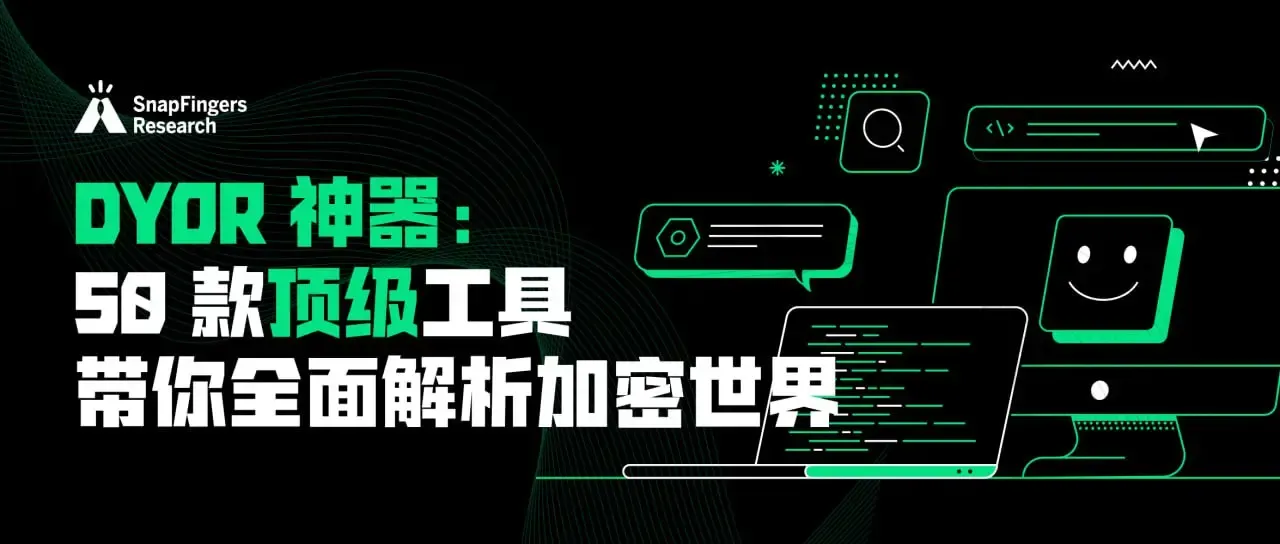IOSG: How High-Yield Driven RWA Injects Decentralized Innovative Vitality into DeFi?
Written by: Nelson
Until recently, stablecoins were the only category of real-world assets (RWAs) that garnered attention. Stablecoins were introduced even before the establishment of Ethereum, replacing volatile cryptocurrencies as the standard medium of exchange on the blockchain. Currently, USDT leads with a market cap of $86.9 billion, followed by USDC with a market cap of $24 billion, together accounting for 7.5% of the total cryptocurrency market cap of $1.46 trillion.
In the past two years, as traditional finance moved away from a zero interest rate policy and government bond yields surpassed DeFi native yields, it became clear that the story of RWAs extends beyond stablecoins.
Let’s examine the structure of the RWA market, starting from the most stable aspects and extending towards yields and risks, gradually exploring its future development and trajectory.

Types of RWAs

Industry Development and Challenges
Stablecoins: The Pillars of RWAs
In the ever-changing cryptocurrency landscape, stablecoins have become the unsung heroes. These digital currencies aim to maintain stability by pegging their value to traditional assets like the US dollar, playing a crucial role in injecting real-world capital into the crypto market. Here are a few observations about the stablecoin space.
The Profitable Stablecoin Ecosystem: The Cash Cow of Cryptocurrency
Stablecoins have proven to be the cash cow of the cryptocurrency industry, with a clear product-market fit and significant monetization opportunities. In fact, they have become one of the most profitable sectors in the crypto space.
For example, consider Tether (USDT) - in the first quarter of this year, its profits exceeded those of financial giant BlackRock, with Tether achieving an impressive $1.48 billion in profits compared to BlackRock's $1.16 billion. Notably, Tether manages assets that are 1/120th of BlackRock's, with Tether managing $70 billion while BlackRock manages $8.5 trillion. Most of Tether's income comes from reinvesting its fiat collateral, and recently, its balance sheet has leaned towards government bonds. Due to its network effects and the fact that customers are only interested in exposure to stable products, Tether is able to capture 100% of the underlying yield, resulting in astonishing profits.
However, this also raises the first issue for existing stablecoin providers. Centralized stablecoins like Tether and Circle have been criticized for privatizing profits while socializing losses, raising fairness concerns. In March of this year, the market suddenly realized that holding stablecoins is not without risk, and holders could face losses if any issues arise related to collateral management, yet they receive no compensation for the risks they bear.
Moreover, there is a widespread issue of lack of transparency and exposure to undisclosed risks, as seen during the collapse of Silicon Valley Bank. At the time of the bankruptcy, the market was unaware of Circle's exposure to Silicon Valley Bank. On the other hand, while Tether was not affected by the recent collapses of traditional banks, its balance sheet still exposes it to illiquid venture-style risks and lending activities. These are clearly not risks that USDT holders are willing to bear.
Both Circle and Tether are designed based on the assumption that their collateral will not depreciate and is 100% liquid, yet neither of these assumptions holds true in reality. This makes both Circle and Tether susceptible to bank runs during black swan events. By sheer luck, Circle avoided this situation after the collapse of Silicon Valley Bank.
Crypto-native stablecoins attempt to control the aforementioned risks; however, each design ultimately encounters the stablecoin trilemma, needing to choose two out of the following three:
- Pegging (peg)
- Decentralization (decentralization)
- Scalability (scalability)

Connecting Traditional Finance with Decentralized Finance
The RWA space has offered various products and protocols over the years, but until recently, it did not receive much attention apart from the previously mentioned stablecoins, which acted more as a safe haven in the crypto market rather than a financing tool. A significant recent catalyst is the high interest rate policy.
The widening gap between DeFi native yields and traditional finance yields has sparked interest in solutions that can help bridge this gap. Again, stablecoins are the protagonists, but this time it is the DeFi native stablecoin protocol - MakerDAO.
Specifically, MakerDAO is the third-largest DeFi protocol by total locked value (TVL), having made a strategic shift in asset management to significantly increase exposure to real-world assets (RWAs). Essentially, Maker's governance is dissatisfied with holding non-productive and "risky" USDC on its balance sheet when there are productive and risk-free alternatives. This direct exposure to government bonds requires the establishment of substantial off-chain infrastructure and legal means. Fortunately, Maker is one of the more resource-rich DAOs and ultimately managed to build this bridge. So far, it has been successful. In the past year, nearly 65% of MakerDAO's fee revenue, amounting to $130 million, has been generated from RWAs.
Allocating part of the government bond yield to the DAI Savings Rate (DSR) module has caused significant changes in the DeFi space, putting substantial pressure on smaller competitors like Liquity's LUSD and AAVE's GHO that cannot keep up with the yields, and driving up overall interest rates in the stablecoin money market.
Blast, a recently announced L2 solution, aims to allocate all stablecoins bridged to its rollup to the DSR, indicating that Maker's RWA strategy may spur growth in DAI demand and adoption within DeFi protocols.
However, while the RWA strategy has helped Maker achieve scalability and optimize its finances, it has clearly distanced it from the trustless nature of DeFi protocols.

Challenges of Adopting Tokenized T-Bills in DeFi
In DeFi projects, no project's RWA balance sheet can compare to Maker's $3 billion. One of the main challenges for broader adoption of RWAs is the limited transferability of tokenized government bonds within the DeFi ecosystem. Existing infrastructure often hinders their liquidity between different DeFi protocols and externally owned accounts (EOAs). Thus, tokenized RWA government bonds face limitations in their utility as collateral within the DeFi space.
For DAOs, the ability to gain direct exposure to RWAs is hindered by legal complexities and the inherent risks posed by the lack of off-chain representation. However, innovative solutions like Centrifuge Prime are addressing this issue. Centrifuge Prime has established a legal structure that allows DAOs and individuals to securely access tokenized government bonds, mitigating the traditional risks and legal barriers faced in these transactions. This development represents a significant step forward in expanding DAOs' investment capabilities in secure and regulated assets.
Credit Markets: Higher Yields Come with Higher Risks
Credit markets aim to serve those seeking higher-risk opportunities and diversified solutions beyond government bonds.
While DeFi protocols like AAVE and Compound attempt to build completely trustless and permissionless DeFi protocols, projects like Centrifuge and Goldfinch introduce stablecoin holders to opportunities in off-chain lending markets. By sacrificing the trustless and permissionless characteristics, they achieve higher capital efficiency, serve a broader range of use cases, and customize products for individual borrowers.
Borrowers, typically initiators of off-chain assets, must undergo traditional due diligence and/or use some RWA collateral to support their borrowing activities. For example, Goldfinch's "trust through consensus" approach allows borrowers to prove creditworthiness through collective third-party assessments. These projects resemble fintech companies more than DeFi projects, primarily aiming to fill the gap of lacking financial infrastructure in emerging markets. However, there is a significant risk that these solutions ultimately attract high-risk borrowers that traditional financial institutions refuse to serve, effectively creating a "lemon" market.
The recent high interest rate environment has also suppressed some credit market activities, making lenders reluctant to participate in alternative markets.
The high interest rate environment has put growth pressure on credit markets like Maple and Centrifuge's invoice finance business, as investors currently prefer direct participation in the bond market. This is also why Centrifuge and Maple have added pools for government bond investments in addition to their core businesses to diversify the growth pressure on their platforms.
Overall, this direction has yet to prove its product-market fit among cryptocurrency audiences, and we see existing projects emphasizing lower-risk alternatives such as investment-grade bonds, senior structured credit, tokenized commodities, and even real estate.

Exploring the Demand Side of RWAs
Crypto-Native Users
Over the past nearly 15 years, crypto-native users have accumulated significant on-chain wealth and developed a habit of keeping most of their wealth on-chain. For those accustomed to using crypto rails, returning to cumbersome traditional financial (tradFi) infrastructure has become quite inconvenient. However, many are seeking to diversify their wealth into assets unrelated to cryptocurrencies. The tokenization of real-world assets (RWAs) allows them to enjoy these diversification benefits while maintaining the fun of an on-chain experience.
Moreover, the growth of the on-chain economy has led multiple DAOs to manage eight to nine-figure budgets, most of which are concentrated in volatile crypto assets. As part of prudent fiscal management, we expect to see more DAOs deploy a portion of their balance sheets into RWAs.
Can RWA Categories Attract Traditional Finance Audiences to Crypto Rails?
For us, the answer is yes.
Some tokenized RWAs can be traded around the clock, such as Backed tokens, which can be freely traded on decentralized exchanges (DEXs) at any time. Thus, the market has gained another venue where they can respond to new information in real-time, even when traditional financial exchanges may be closed.
As cryptocurrencies become a more mainstream asset class, the overlap between crypto and stock investors will only increase. Traditional finance holders may be interested in leveraging DeFi's composability and innovation; for example, imagine a product similar to Liquity that allows users to issue zero-interest loans against their retirement investments in a Standard & Poor's 500 index ETF—such a product would certainly have a certain audience.
Conclusion
Many are pondering what changes the aforementioned protocols will undergo when the high interest rate environment shifts. We believe that the high interest rate environment is a short-term stopgap for these protocols, but the ultimate focus remains on the core businesses of each protocol. For instance, MakerDAO's long-term focus is still on how to expand the influence of their DAI (in terms of issuance and use cases); while Centrifuge may also have T-bills business bringing them some revenue, their main effort in the future will still be on invoice finance-related matters (programmable decentralized invoice finance infrastructure); similarly, Maple Finance's long-term value lies in credit lending and borrowing (after experiencing some past missteps, Maple Finance is actively seeking credit solutions that better balance risk and capital efficiency), so everyone ultimately needs to return to their original business or extend upon it.
Additionally, since the rise of cryptocurrencies, real-world assets (RWAs) have gained significant attention in the crypto space, especially with the success of stablecoins like USDT and USDC, which have become a profitable sector in the crypto market. The landscape of RWAs in the crypto space is undergoing a transformative journey, presenting a nuanced picture filled with challenges and opportunities. At the forefront of this evolution are stablecoins, as the primary RWAs, which have seamlessly integrated into the crypto market. Their widespread adoption marks a validated product-market fit, providing a stable bridge between traditional financial systems and the vibrant world of decentralized finance (DeFi).
However, stablecoins also face challenges and risks, such as value distribution, lack of transparency, and scalability issues. A deeper examination reveals a complex narrative. Centralized stablecoin entities, while investing the fiat entrusted to them and reaping substantial profits, face scrutiny as they pass on the underlying risks associated with these investments to users, even though users receive no returns from the underlying assets. This dynamic reveals a delicate balance between entity profitability and fair treatment of their user community.
Tokenized government bonds, as a bridge between traditional finance and decentralized finance (DeFi), have also garnered interest under current favorable conditions, leading to the emergence of credit lending protocols. The tokenization of various assets such as stocks, real estate, and commodities is expanding, providing more investment opportunities. Despite facing limitations in integrating RWAs, DeFi protocols have made significant progress in building bridges for easier access. This evolution opens up unique opportunities for DeFi-native users who have accumulated substantial on-chain wealth over the past decade.
The fusion of traditional finance (tradFi) products with blockchain technology heralds innovation, unlocking novel financial tools and strategies. As the overlap between traditional and crypto investors continues to grow, the synergies between these two worlds are poised to redefine the financial landscape. The potential for collaboration offers prospects for developing previously untapped markets and creating novel, inclusive financial ecosystems.
Overall, the future of RWAs lies in the expansion of assets and capital, as well as addressing current challenges. This progress is essential for diversification, convenience, access to restricted geographical areas, and obtaining regulatory support. However, it must be recognized that the process of RWA-ization, while opening new avenues, also introduces a trade-off. The effective integration of RWAs will inevitably compromise the trustless nature that the crypto space has always upheld. Finding the right balance between innovation and decentralization will be a key challenge we face in this ever-evolving domain.










